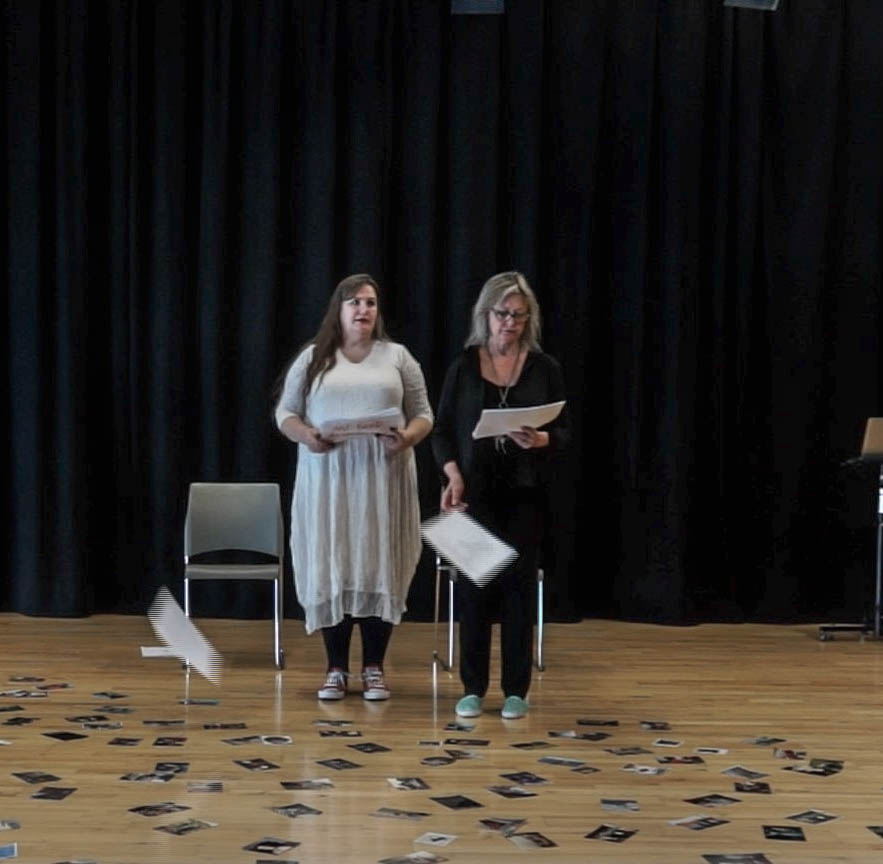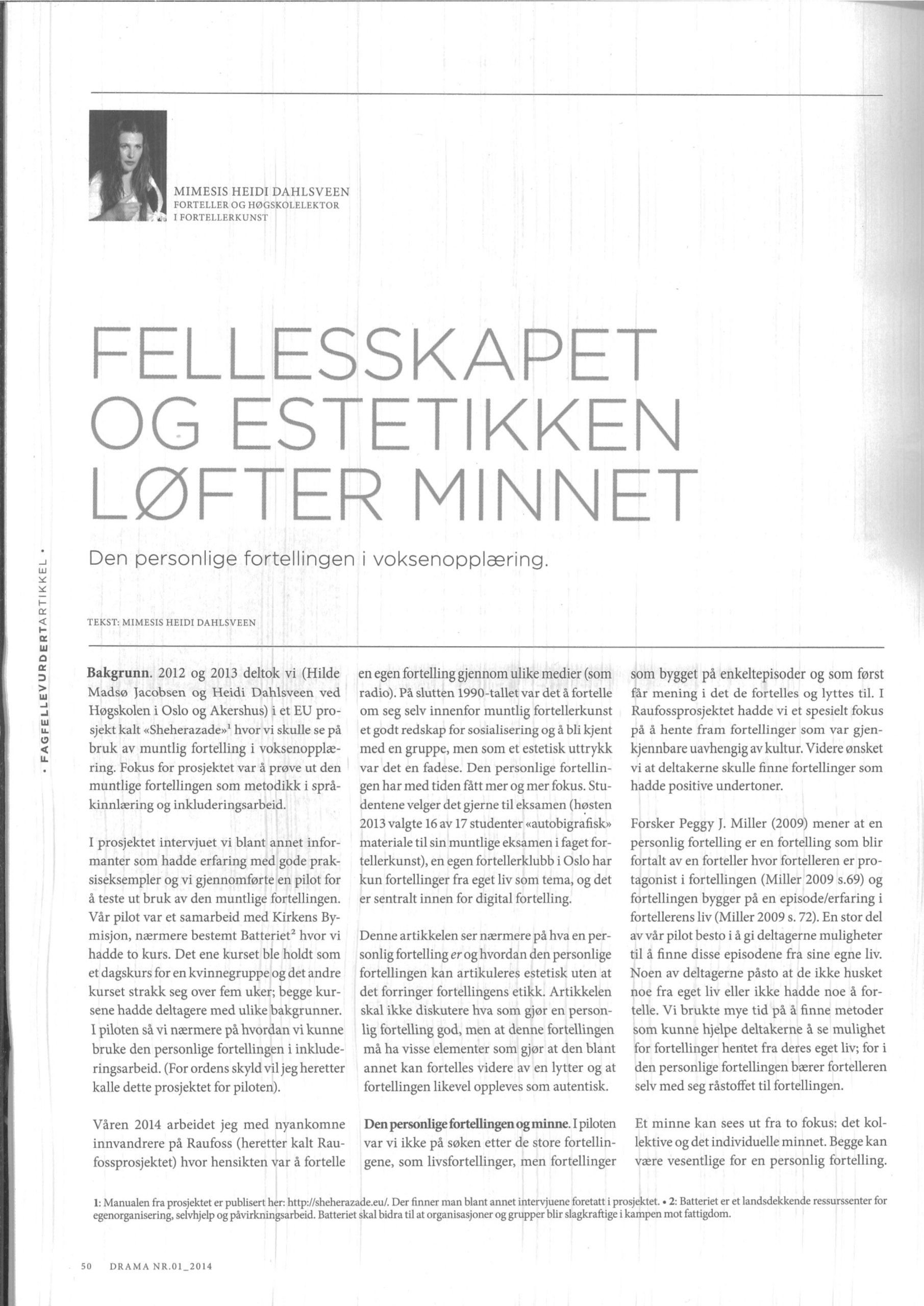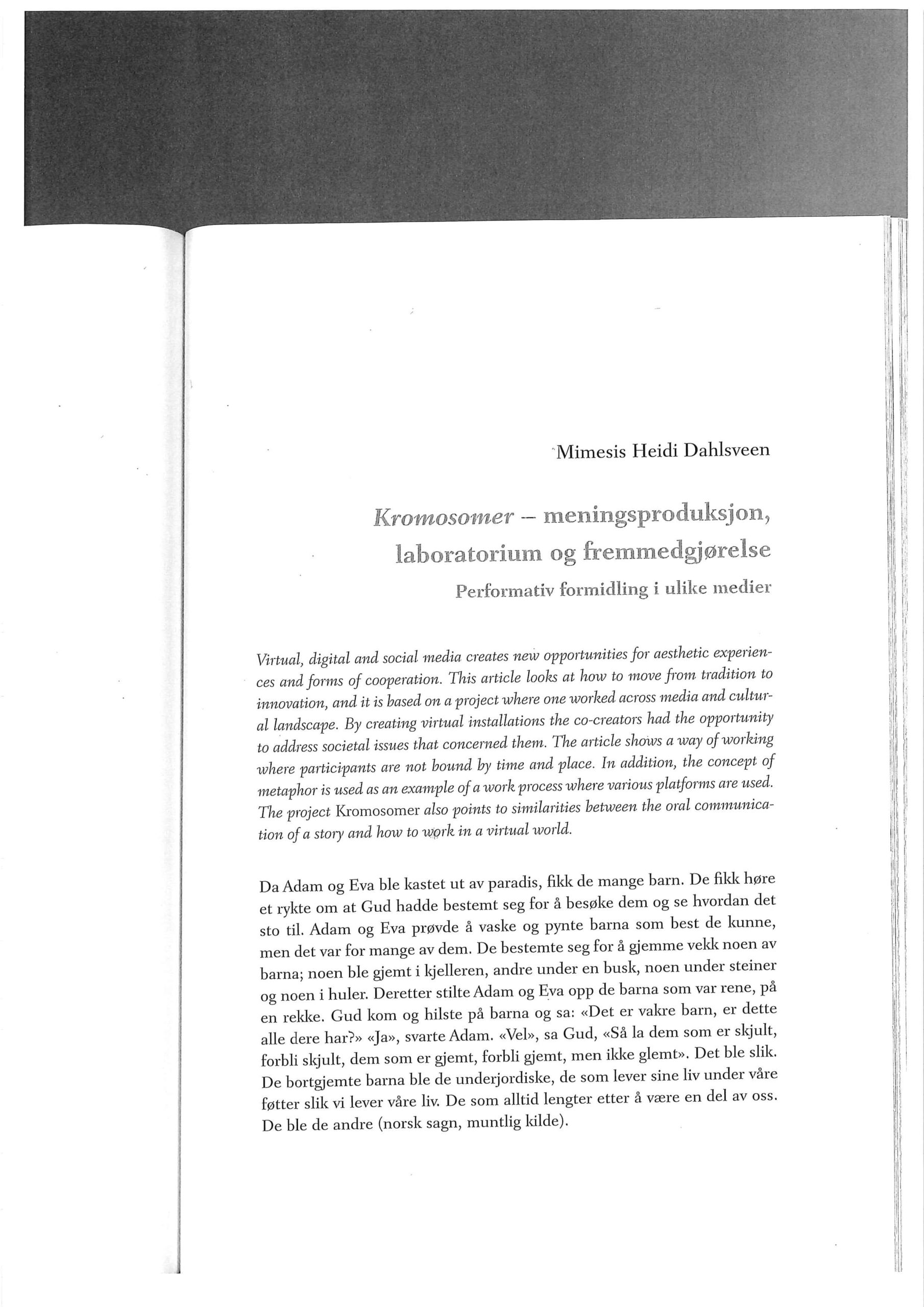
ARTISTIC RESEARCH WILL EAT ITSELF: The kiss – utterance surrounding the utterance within
Venke Aure, professor in art didactics at OsloMet – metropolitan university
Mimesis Heidi Dahlsveen, associated professor in storytelling and storyteller at OsloMet – metropolitan university
Abstract
From the performance:
The giant Angerboda grabbed Loke and kissed him. In this kiss, the creation of three monstrous children took place: the wolf Fenris, the serpent of Midgard and the death queen Hel. I told this to my son. My son died.
This is a story of blending utterances
This is a performing paper, a mixing of discourses based on a performance about the grieving mother
In the utterance within, the artist’s voice emerges as an empirical-near being. The hurricane’s eye of the paper is a performance that blends a personal narrative with a Norse myth. Through grotesque realism (Bakhtin), the artistic research looks at the synthesis between the private and the public. All that is elevated, spiritual, ideal and abstract is brought down to a material-bodily level, and in this, the degradation the life-giving laughter arises and displaces the entrenched ideas. The grotesque realism serve as a concretization of abstract ideas that manifest themselves bodily.
In their expression, the two authors mix the personal and the academic discourses using temporality, contrasts, interruptions and various physical placements.
Through narratives and written and spoken polyphonic utterances, the authors will clarify how the two concepts artistic and art-based research, coming from different academic meanings and focuses, can be blended in an utterance. In the blurring of the lines that separate art, academia and life, a criticism of a tradition, based on discrete disciplinary disciplines and institutional structures, arises.
Relational aesthetic strategies emerges as an approach connecting the utterances. The authors use Nicolas Bourriaud’s relocation of the field of art that focuses on the work of relationships and meetings between works and persons in a specific context. In addition, the authors addresses Claire Bishop’s criticism of the harmony perspective in Bourriaud’s thinking where the grotesque is associated with an existential experience.

Fellesskapet og estetikken løfter minnet 2014
Den fagfellevurderte artikkelen ble publisert i drama bladet.

Kromosomer – meningsproduksjon – 2013
Artikkelen er publisert i anatologien: Estetikk og samfunn Tekster mellom samtidskunst og kunstdidaktikk - utgitt av Fagbokforlaget.